Lesser Spider AHI Ball Python For Sale
$849.99
WE HAVE A LESSER SPIDER AHI BALL PYTHON FOR SALE. HERE ARE SOME HIGHLIGHTS:
- Python regius
- Captive Bred
- Approximately 41 Inches In Length
- Roughly 1024 Grams And Growing
- When Hatching Out Of The Egg They Can Be As Small As 10 Inches And Grow To Be 5 Feet
- Feeding On Live Medium Rats Weekly
FUN FACTS!
- The AHI Gene Is Still Relatively New And Creates A Wide Dorsal Stripe
- Ball Pythons Are Native To Central And Western Africa And Thrive In These Warm, Tropical Areas
- With Proper Care And Setup These Snakes Can Live 20 – 25 Years In Captivity
- Great For A First Time Keeper As Well As An Experienced Breeder
Lesser Spider AHI Ball Python
Ball Pythons
Ball pythons, scientifically known as Python regius, are small to medium-sized constrictor snakes native to the grasslands and savannas of West and Central Africa. These pythons are named for their unique defensive behavior of curling into a tight ball when threatened, with their head tucked in the middle. In their natural habitat, they thrive in warm, humid environments and are often found in burrows or under logs, making them adept at both terrestrial and arboreal activities.
One of the key reasons ball pythons are immensely popular in the pet trade and among reptile enthusiasts is their docile nature. They are known for being manageable in size, generally reaching 3 to 5 feet in length when fully grown, and exhibiting a calm temperament, making them suitable pets for both novice and experienced snake keepers. Additionally, ball pythons have relatively straightforward care requirements, which further enhances their appeal as pets.
The fascination with ball pythons extends beyond their natural characteristics. The species exhibits a remarkable diversity in appearance due to a wide range of genetic mutations, commonly referred to as morphs. These morphs result in a variety of patterns and colorations, from the classic brown and gold of the wild type to striking combinations of black, white, yellow, and more. Understanding and appreciating these different morphs is crucial for any ball python enthusiast, as it highlights the genetic diversity and beauty within the species.
Among the many morphs, the Lesser Spider Ahi Ball Python stands out as a unique and captivating variant, combining the traits of its parent morphs in a mesmerizing way. Exploring these morphs not only enhances one’s knowledge of ball pythons but also contributes to the broader appreciation of reptile genetics and breeding practices.
What is a Morph? Understanding Genetic Variations
The term “morph” in the context of ball pythons refers to the distinct physical appearances that arise due to genetic variations. These variations are the result of different genetic traits being expressed, leading to a spectrum of colors, patterns, and other physical characteristics. In essence, a morph is a unique combination of genetic traits that differentiates one ball python from another.
To understand how these variations occur, it’s essential to delve into the basics of genetics. In reptiles, as in other animals, traits are inherited through genes, which come in pairs. Each gene pair consists of one gene from each parent. These genes can be either dominant or recessive. Dominant genes are those that are expressed when they are present, whereas recessive genes are only expressed when both genes in the pair are recessive.
For instance, if a ball python inherits a dominant gene for a particular color from one parent and a recessive gene from the other, the dominant gene will be expressed, and the python will exhibit that color. Conversely, if the python inherits two recessive genes, it will display the trait associated with those recessive genes. This interplay of dominant and recessive genes results in the diverse array of morphs observed in ball pythons.
Several popular ball python morphs exemplify this genetic diversity. The Albino morph, characterized by its lack of dark pigmentation and striking yellow and white coloration, is a result of recessive genes. The Pastel morph, on the other hand, displays a brighter and more vibrant color palette due to a dominant gene. Other notable morphs include the Spider morph, known for its unique web-like pattern, and the Piebald morph, distinguished by its patches of unpigmented skin.
These examples highlight the fascinating genetic variations that contribute to the variety of ball python morphs. Understanding these genetic principles allows breeders to predict and even manipulate the outcomes of breeding, resulting in the continuous emergence of new and captivating morphs within the species.
Introducing the Lesser Spider Ahi Ball Python
The Lesser Spider Ahi Ball Python is a captivating and unique morph that has garnered significant attention within the reptile community. This specific morph is the result of a fascinating combination of three distinct genes: Lesser, Spider, and Ahi. Each of these genes contributes unique characteristics to the snake’s appearance, resulting in a visually striking and appealing reptile that stands out among other ball python morphs.
The Lesser gene is known for its ability to lighten the overall coloration of the snake, often producing a buttery, pastel-like hue. The Spider gene, on the other hand, introduces a distinctive pattern characterized by thin, wavy lines that resemble a spider’s web. Finally, the Ahi gene enhances the brightness and contrast of the snake’s coloration, adding an extra layer of visual appeal. When these three genes are combined, the result is the Lesser Spider Ahi Ball Python, which showcases a harmonious blend of light coloration, intricate patterns, and vibrant contrasts.
The history and development of the Lesser Spider Ahi Ball Python are as intriguing as the morph itself. This morph was created through the dedicated efforts of breeders who sought to combine the most desirable traits of the Lesser, Spider, and Ahi genes. Notable breeders, such as Kevin McCurley of New England Reptile Distributors (NERD), played a pivotal role in the development and popularization of this morph. Through meticulous breeding programs and a deep understanding of genetic inheritance, these breeders were able to produce a morph that quickly became sought after by enthusiasts and collectors alike.
As with any morph, the creation of the Lesser Spider Ahi Ball Python required careful selection and breeding of parent snakes to ensure the desirable traits were passed down to the offspring. The combination of the Lesser, Spider, and Ahi genes not only resulted in a visually stunning snake but also highlighted the potential for creative and innovative breeding within the ball python community.
Physical Characteristics and Appearance
The Lesser Spider Ahi Ball Python is a remarkable morph that exhibits a unique combination of physical traits, setting it apart from other ball python varieties. This morph is a result of the interplay between three distinct genetic traits: Lesser, Spider, and Ahi. Each of these genes contributes to its distinctive appearance, which captivates both enthusiasts and breeders alike.
The coloration of the Lesser Spider Ahi Ball Python is one of its most striking features. The Lesser gene typically lightens the overall coloration, creating a softer, more pastel-like hue. This results in a backdrop that varies from creamy yellows to light browns, often with a subtle iridescent sheen. The Spider gene introduces an intricate web-like pattern, characterized by high contrast and crisp, clean lines. This pattern often appears as dark, branching lines that traverse the lighter background, giving the morph its “spider” moniker.
The Ahi gene further enhances the visual appeal by adding a layer of complexity to both the color and pattern. It often amplifies the brightness and contrast, accentuating the spider pattern even more dramatically. The Ahi influence can also introduce variations in pattern intensity and distribution, making each individual snake uniquely beautiful.
In terms of size, the Lesser Spider Ahi Ball Python follows the general characteristics of ball pythons. Adult females typically range from 3 to 5 feet in length, while males are slightly smaller, averaging 2.5 to 3.5 feet. Their robust, muscular bodies are well-proportioned, with a distinctive, triangular-shaped head that is slightly wider than their neck.
Distinguishing features of this morph include the combination of a lightened body color, the intricate spider pattern, and the unique enhancements brought by the Ahi gene. This blend of genetic traits not only creates a visually stunning snake but also underscores the fascinating complexity of ball python morphs. Whether for a seasoned breeder or a new enthusiast, the Lesser Spider Ahi Ball Python stands as a testament to the captivating diversity within the world of reptile genetics.
Behavior and Temperament
The Lesser Spider Ahi Ball Python exhibits a unique blend of behaviors influenced by its genetic makeup. As a morph, these pythons tend to exhibit a calm and docile demeanor, making them an excellent choice for both novice and experienced reptile keepers. Their behavior is generally predictable, which contributes to their popularity among enthusiasts.
Activity levels of the Lesser Spider Ahi Ball Python can vary. They are primarily nocturnal, becoming more active during the evening and nighttime hours. During the day, they prefer to hide and rest, which is typical of ball pythons in general. Providing appropriate hiding spots within their enclosure is essential for their comfort and well-being.
Handling requirements for the Lesser Spider Ahi Ball Python are relatively straightforward. Their docile nature means they usually tolerate handling well, especially if they are accustomed to being handled from a young age. It is crucial, however, to handle them gently and support their entire body to prevent stress or injury. Regular, gentle handling can help reinforce their tame demeanor and strengthen the bond between the python and its keeper.
Compatibility with new or experienced reptile keepers is another strong point of the Lesser Spider Ahi Ball Python. Due to their manageable size, typically reaching three to five feet in length, and their calm temperament, they are suitable for keepers of all experience levels. Experienced keepers may appreciate the unique genetic traits and striking appearance of this morph, while new keepers will find them to be a manageable and rewarding introduction to snake keeping.
One behavioral trait specific to the Lesser Spider Ahi Ball Python, influenced by its spider genetics, is the potential for mild neurological issues such as head wobble. This condition can cause slight head tremors or difficulty in coordination, but it generally does not affect the snake’s quality of life or ability to thrive when provided with proper care and a stress-free environment.
In conclusion, the Lesser Spider Ahi Ball Python’s calm demeanor, manageable handling requirements, and suitability for keepers of all levels make it a fascinating and rewarding pet. Their unique genetic traits further enhance their appeal, providing an interesting and engaging experience for reptile enthusiasts.
Care Requirements and Habitat Setup
The Lesser Spider Ahi Ball Python, a unique and captivating morph, requires specific care and habitat conditions to thrive. Establishing an appropriate environment is crucial for the well-being of this snake. The enclosure should be spacious enough to allow for movement and exploration. For adult Lesser Spider Ahi Ball Pythons, a 40-gallon tank is generally sufficient. However, larger enclosures are always preferable, as they provide more room for enrichment and natural behaviors.
When setting up the habitat, substrate choice is important. Aspen shavings or coconut husk bedding are excellent options, as they help maintain humidity and are easy to clean. Avoid substrates that can pose ingestion risks, such as sand or gravel. Additionally, the enclosure should include hiding spots, such as commercial hides or natural decorations like cork bark, to provide a sense of security.
Temperature regulation is another critical aspect of care. The enclosure should have a thermal gradient, with a warm side maintained at 88-92°F and a cooler side around 78-82°F. This allows the Lesser Spider Ahi Ball Python to thermoregulate effectively. During the night, temperatures can drop slightly but should not fall below 75°F. Utilizing a thermostat-controlled heating pad or ceramic heat emitter can help maintain consistent temperatures.
Humidity levels should be kept between 50-60%, with slight increases during shedding periods. Regular misting and the use of a hygrometer are recommended to monitor and maintain appropriate humidity. A water bowl large enough for soaking should always be available, as it aids in hydration and helps with shedding.
Feeding schedules for the Lesser Spider Ahi Ball Python typically involve offering appropriately sized rodents every 7-10 days. Younger snakes may require more frequent feedings, while adults can be fed less often. It’s essential to monitor feeding and adjust based on the snake’s condition and growth rate.
Routine maintenance is vital for the health of the Lesser Spider Ahi Ball Python. This includes regular cleaning of the enclosure, water bowl, and substrate, as well as monitoring for signs of illness or stress. By providing a well-maintained and enriching environment, owners can ensure the health and longevity of this fascinating morph.
Health Considerations and Common Issues
The Lesser Spider Ahi Ball Python is a captivating morph, yet potential owners should be aware of the health considerations and common issues that may arise. One of the primary concerns is associated with the Spider gene, which can cause a neurological condition known as the “wobble effect.” This condition is characterized by an unsteady or erratic movement, particularly when the snake is excited or stressed. While the wobble effect varies in severity, it is crucial for owners to monitor their python closely and provide a low-stress environment to mitigate its impact.
Aside from genetic concerns, recognizing signs of illness in the Lesser Spider Ahi Ball Python is essential for maintaining its health. Common signs include a lack of appetite, respiratory issues such as wheezing or bubbling at the nostrils, lethargy, and abnormal shedding patterns. Early detection of these symptoms can prevent more severe health problems and ensure timely veterinary intervention. Regular veterinary check-ups are indispensable for monitoring the python’s overall health and catching potential issues early.
Another frequent health issue is the risk of parasites, both internal and external. Regular cleaning and disinfection of the enclosure, along with proper husbandry practices, can significantly reduce the risk of parasitic infections. Additionally, providing an appropriate diet and maintaining optimal humidity and temperature levels are vital for the snake’s well-being.
In conclusion, while the Lesser Spider Ahi Ball Python is a unique and fascinating morph, prospective owners must be proactive in managing its health. Being aware of genetic concerns like the wobble effect and recognizing early signs of illness are key components of responsible ownership. Regular veterinary care and diligent husbandry practices will ensure that your python remains healthy and thrives in captivity.
Conclusion: Is the Lesser Spider Ahi Ball Python Right for You?
The Lesser Spider Ahi Ball Python stands out as a truly unique and captivating morph within the world of reptile keeping. Throughout this blog post, we’ve explored its distinct visual characteristics, including the intricate patterns and striking coloration that make it so appealing to enthusiasts. Additionally, we’ve discussed the genetic lineage and the fascinating combination of traits inherited from its parent morphs.
For those considering adding a Lesser Spider Ahi Ball Python to their collection, it’s essential to weigh several factors. Firstly, this morph is well-suited for both seasoned reptile keepers and dedicated beginners who are prepared for the commitment. Its manageable size and generally docile nature can make it a suitable choice for individuals who are looking for a visually striking yet relatively low-maintenance pet.
However, potential owners should also be aware of the specific care requirements and potential health considerations associated with this morph. As with any pet, providing an appropriate habitat, consistent feeding schedule, and proper veterinary care are crucial to ensuring the well-being of your Lesser Spider Ahi Ball Python. Furthermore, some morphs, including those with the Spider gene, may exhibit neurological issues that require additional attention and care.
Given these considerations, it’s advisable to conduct thorough research and seek advice from reputable breeders or experienced reptile experts before making a decision. By doing so, you can gain valuable insights and ensure that you are fully prepared to meet the needs of your new pet.
In conclusion, the Lesser Spider Ahi Ball Python offers a blend of beauty, uniqueness, and intrigue that can make it a delightful addition to the right home. Whether you are an experienced herpetologist or a passionate newcomer to the hobby, this morph has the potential to bring joy and fascination into your life, provided you are ready to embrace the responsibilities that come with its care.


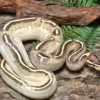





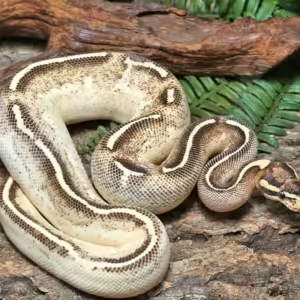








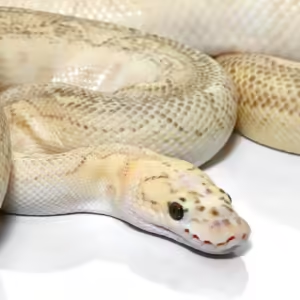

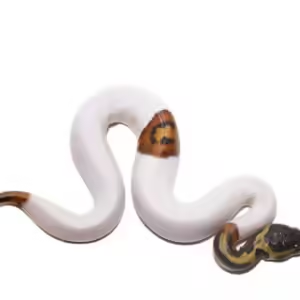
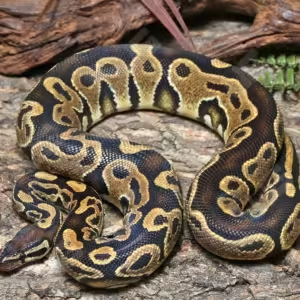
Reviews
There are no reviews yet.